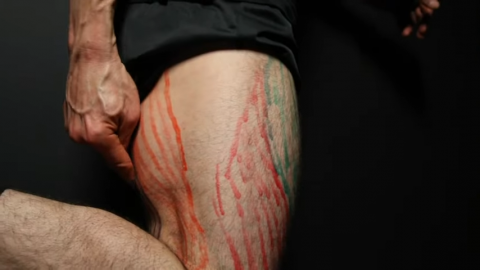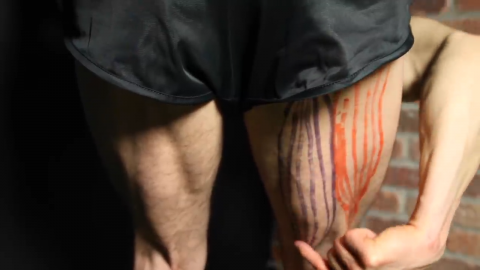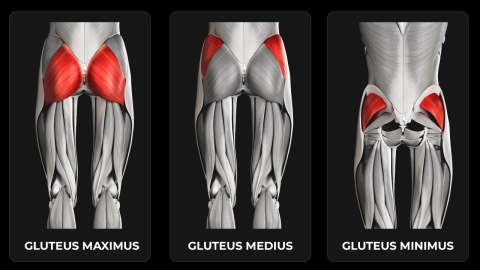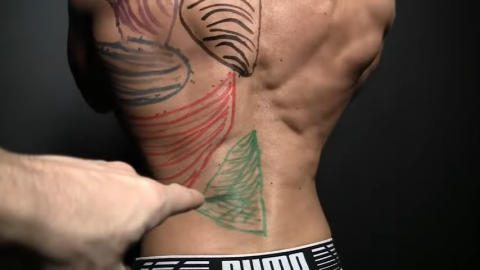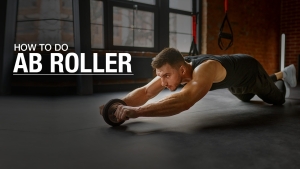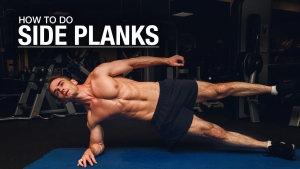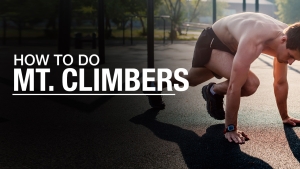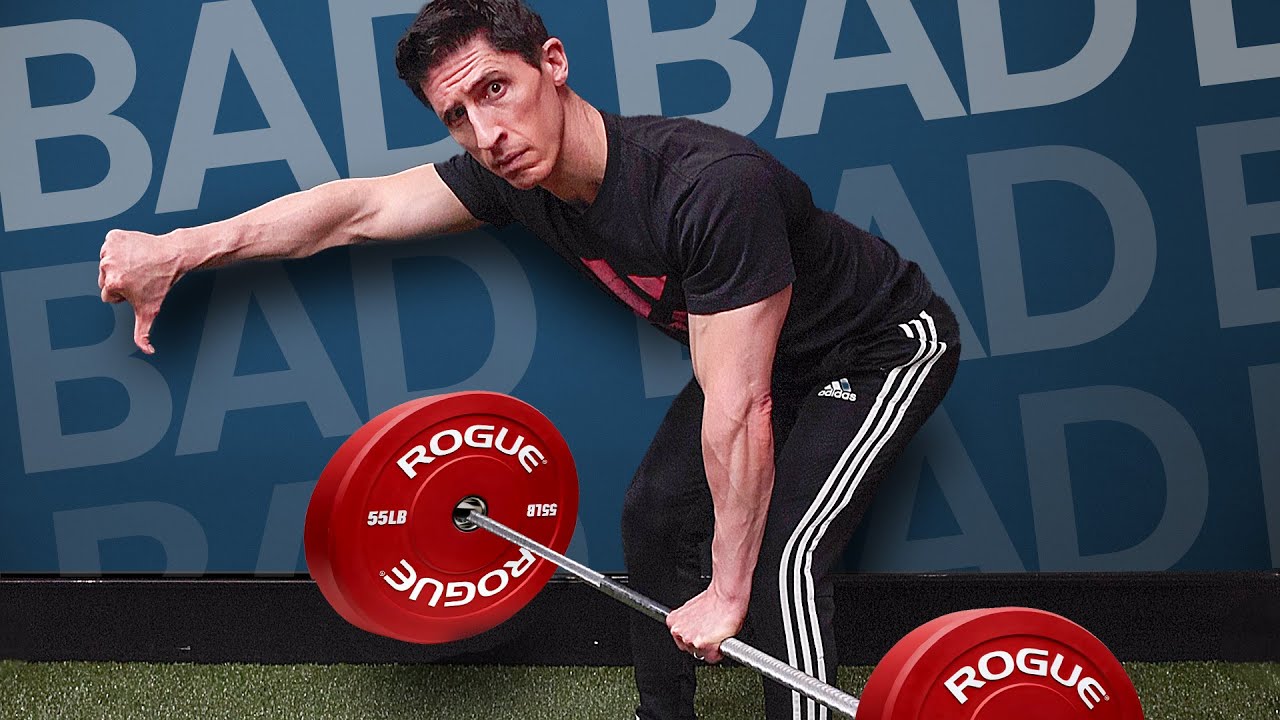
PERFECTING THE ROMANIAN DEADLIFT
The Romanian Deadlift (RDL) is not just a handy exercise…
It’s a must-have movement in the arsenal of anyone looking to build serious strength and muscle in their lower back, hamstrings, and glutes.
But it’s not just about lifting heavier weights; it’s about doing it right.
The RDL is a masterclass of an exercise when performed correctly, engaging your posterior chain like few others can.
However, it’s also riddled with potential missteps and form faux pas that can turn this move into a recipe for disaster.
As your personal trainer, it’s my duty to steer you clear of these common errors and guide you towards perfecting your RDL form.
We’re going to dissect this functional exercise, breaking it down into manageable components that ensure you’re not just going through the motions, but actually making every rep count.
The goal here isn’t just to do the RDL; it’s to master it, to make it work for you in building strength and a more resilient and powerful lower body.
MUSCLES ACTIVATED DURING THE RDL
As always, I want to start with the muscles that are activated during the Romanian Deadlift.
Why bother getting familiar with these muscles?
It’s all about mind-to-muscle connection.
Fostering a strong mind-to-muscle connection can significantly enhance your workout’s effectiveness.
By consciously engaging and focusing on the specific muscles worked, you can ensure proper form, reduce the risk of injury, and maximize the exercise’s benefits.
This connection is not just about going through the motions; it’s about actively involving the targeted muscle groups to stimulate growth, strength, and endurance.
So, let’s dive deeper into the key muscles the RDL targets, including the hamstrings, glutes, and erector spinae.
BICEPS FEMORIS
When you’re doing the Romanian Deadlift (RDL), one of the main powerful muscles you’re working is the biceps femoris, part of your hamstrings located at the back of your thigh.
Picture it as having two parts: one attaches to a bony area near where you sit down, and the other starts from your thigh bone.
This muscle runs all the way down your thigh and connects near your knee on a smaller bone called the fibula.
So, why does this matter when you’re doing the RDL?
Here’s what the biceps femoris helps you do:
- Bend Your Knee: This is super important for a bunch of movements, not just in your workout but in everyday life, like when you walk, run, or use a squatted position to pick something up.
- Extend Your Hip: Imagine the motion of pushing your hip joints forward. The longer part of this muscle helps with that, which is key for explosive actions like jumping or quickly taking off to run.
- Twist Your Lower Leg Outward: When your knee is bent, this muscle also helps rotate your lower leg outwards.
SEMITENDINOSUS
Another star player is the semitendinosus muscle.
This one also kicks off from a bony spot in your pelvis—right under where you sit—and travels down to hook onto the inside part of your shin, just below the knee.
Running along the inner thigh, it’s notable for its long, tendon-like ending, which is actually how it got its name.
So, why is the semitendinosus important when you’re doing your RDLs? Let’s break it down:
- Bending Your Knee: Just like opening and closing a hinge, this muscle is key for bending your knee. Whether you’re walking, getting into a sprint, or squatting, you’re using this action.
- Pushing Your Hip Back: Think about the motion of stepping back or launching into a leap; the semitendinosus helps extend the hip to make these movements happen.
- Turning Your Lower Leg Inward: With your knee bent, this muscle also has a role in twisting your lower leg inward toward the center of your body.
GLUTEUS MAXIMUS
The gluteus maximus is a major player in shaping your backside, being the largest muscle in your buttocks.
It originates from the rear part of your hip bone, your tailbone, and the base of your spine, extending down to attach to your thigh bone and a tough band of tissue along your leg.
Not only does it contribute to the rounded look of your glute muscles, but it’s also incredibly strong.
For beginners stepping into the world of RDLs, here’s why the gluteus maximus is so important:
- Hip Extension: This muscle is the champion of extending your hip. Imagine the action needed to stand up from a chair, climb stairs, or sprint. That’s your gluteus maximus at work, and it’s a crucial movement in the RDL, driving the upward phase of the lift.
- Lateral Rotation of the Thigh: It helps in rotating your thigh outward, a key motion for stabilizing your hips during walking, running, or performing RDLs. This function ensures your hips are supported and aligned during this lower body exercise.
- Posterior Pelvic Tilt: The gluteus maximus has a role in tilting your pelvis back. This action is beneficial for maintaining a good posture and minimizing lower back strain, especially important during the RDL to keep your spine in a safe, neutral position.
ERECTOR SPINAE
Picture this group as the ultimate support crew running the entire length of your spine, from the bottom of your skull all the way down to your hips.
Located on both sides of your spine, these muscles are the heroes keeping your back straight and strong.
For beginners getting to grips with the RDL, here’s why the erector spinae are so important:
- Keeping Your Spine Straight: As you lean forward and lift in the RDL, your erector spinae work hard to keep your spine straight and prevent it from rounding. This action is key to safely and effectively performing this advanced movement, ensuring you target the right muscles without straining your back.
- Upright Posture: These muscles are critical for maintaining an upright posture, not just during your workout but in your daily life. They help counteract gravity, allowing you to stand tall and prevent slouching.
- Stabilizing Your Spine: Think of the erector spinae as the stabilizers of your spine. They keep everything in place as you move, which is especially important during muscle building exercises like the RDL where maintaining a neutral spine is crucial for safety and effectiveness.
- Allowing Rotation: While the RDL primarily focuses on the hip hinge movement pattern, having strong erector spinae also supports rotational movements of the spine. This isn’t the main focus of the RDL, but it’s an added benefit that comes from strengthening these muscles.
BREAKDOWN OF THE ROMANIAN DEADLIFT
Now that you know the major muscles you’ll be targeting during the Romanian Deadlift, let’s break down this foundational movement step by step.
Think of this like a must-do checklist every time you step up to the barbell.
I’d recommend reading through each section a few times to make sure you understand exactly what to do before you begin performing this beneficial exercise.
Most importantly, start out with light weights. I want you to master this form before you progress to heavier weights.
This idea applies to all deadlift variations, including Stiff-Leg Deadlifts and the Single-Leg Romanian Deadlift.
With that said, let’s start with your grip…
GRIP

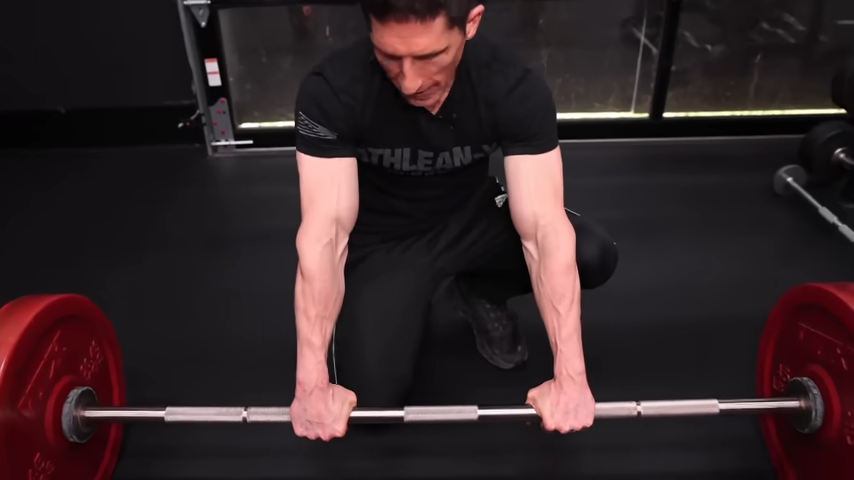
A healthy strong grip is the foundational element of the Romanian Deadlift, significantly influencing this essential exercise’s effectiveness and safety.
If it’s too wide, you risk compromising your ability to engage your lats properly, which are essential for keeping the bar in the correct position throughout the lift.
Conversely, a grip that’s too narrow can lead to interference with your body, disrupting the mechanics of the lift and potentially leading to poor form or injury.
The ideal grip width for the RDL is a pronated grip just outside shoulder width, allowing for optimal lat engagement, reminiscent of the engagement experienced during a Straight Arm Pushdown.
This positioning not only ensures the bar remains close to your body, enhancing the lift’s safety and efficiency, but it also maximizes the activation of the targeted muscle groups.
FEET

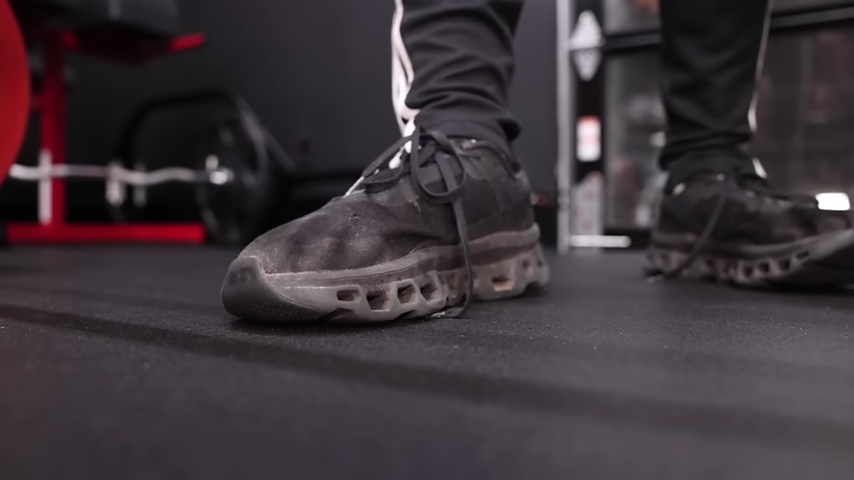
Your feet are the literal foundation of this awesome exercise, acting as your connection to the ground and a crucial component of your stability and balance.
Begin with a foot placement of feet hip-width apart, creating a stable base.
Imagine your feet are roots extending into the floor.
Focus on gripping the ground with your toes, ensuring that the entire foot maintains full contact with the ground.
This grip is not just about stability; it’s about activating the chain of muscles needed for a powerful lift.
During the RDL, it’s common to feel a shift in your center of gravity, potentially feeling like you’re about to tip backward.
This sensation is where the importance of gripping the floor truly comes into play.
By actively pressing down through your toes, you engage additional stabilization through your legs, which helps maintain your balance throughout the movement.
As you hinge at the hips and lower the weight, pay attention to how the weight is distributed across your feet.
Aim to keep it evenly spread from the heel to the toe, avoiding leaning too far forward or backward.
This balanced distribution supports proper form, reduces the risk of injury, and ensures the targeted muscles are effectively engaged.
CHEST AND CORE

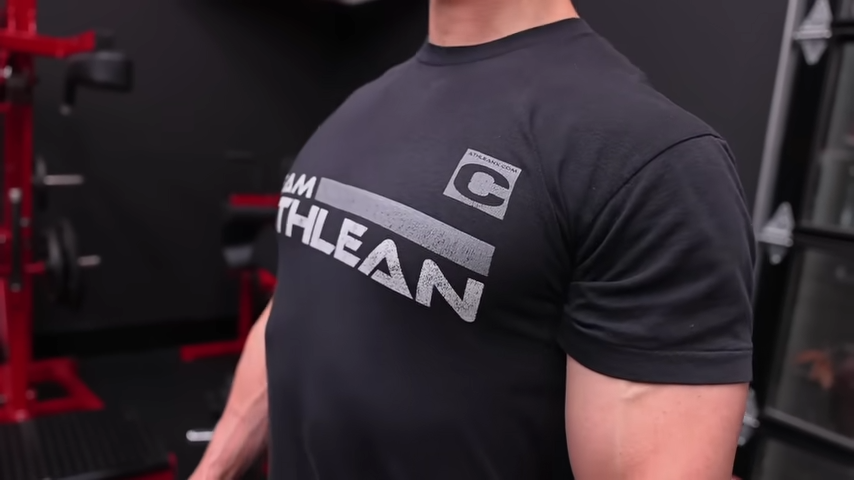
Next, we have to set the proper position of the spine, and we can do that from two different angles.
The first is with your chest.
After establishing a solid base with your feet, the next critical aspect of the Romanian Deadlift form is the positioning of your chest and the alignment of your spine.
This step is vital for protecting your back and ensuring the movement targets the intended muscle groups effectively. Here’s how to get it right:
Rather than merely pulling your shoulders back, focus on elevating your chest upward.
This subtle yet powerful adjustment involves lifting your collarbones towards the ceiling.
This action not only broadens your chest but also ensures a natural, protective alignment of your thoracic spine (the middle portion of your spine), which is essential for preventing harmful rounding (flexion).
Proper chest elevation plays a pivotal role in setting your spine into its optimal position.
By correcting the thoracic spine, you’re also promoting a neutral spine throughout the entirety of the lift.
A neutral spine maintains the spine’s natural curves, minimizing the risk of compressive forces that can lead to injury.
This alignment is crucial when you’re hinging at the hips and lowering the weight in the RDL.
Alongside chest positioning, actively engage your core strength muscles.
This core engaging supports your spine further, creating a solid column that can withstand the load and explosive movements of the RDL.
Think of keeping your core tight as if preparing for a light punch to the stomach; this core stabilization supports your spine and complements the chest elevation, ensuring maximum protection and effectiveness.
It’s essential to maintain this elevated chest and engaged core muscles position throughout the entire range of motion of the RDL.
From the initial descent to the moment you return to standing, this consistent posture ensures that your back is safeguarded, and the focus remains on the glutes and hamstring muscles.
Speaking of the glutes…
GLUTES

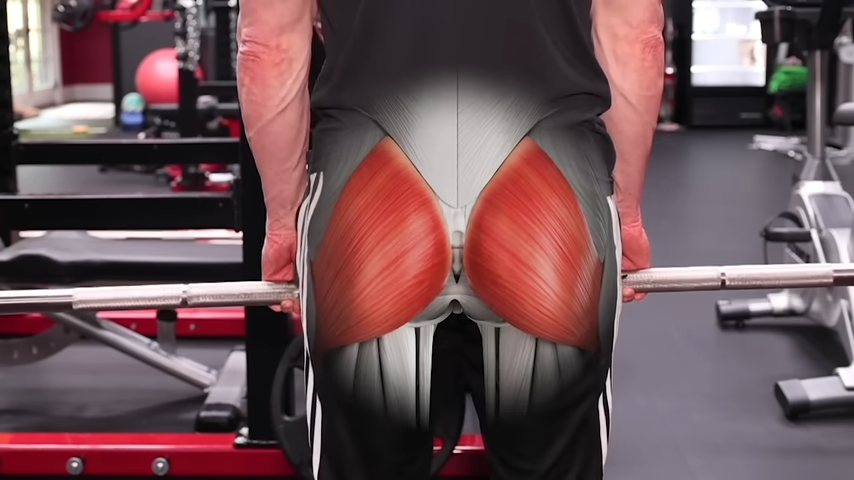
Activating your glutes is a crucial step in achieving the ideal form for the Romanian Deadlift.
This activation is not just about the end position of each rep but plays a critical role in maintaining spinal neutrality and overall form integrity throughout the entire movement.
Here’s a deeper look into effectively engaging your glutes during the RDL:
As you set up for the RDL, consciously contract your glutes.
This contraction does more than just move you into the correct end position; it actively supports your lower back by encouraging a neutral spine from the bottom up.
The act of squeezing your glutes helps to prevent the lower back from rounding (lumbar flexion), a common mistake that can lead to injury.
It’s essential to synchronize the engagement of your glutes with the elevation of your chest and the engagement of your core musculature for a safe position.
This coordinated effort ensures that your spine remains in a neutral spine position and protected throughout the lift.
Avoid focusing solely on one aspect of your form without the other; the elevation of the chest, engagement of the core, and squeezing of the glutes should occur simultaneously to support a safe and effective lift.
The importance of glute engagement extends beyond just the setup or the end position.
Maintain a mild, consistent squeeze of your glutes throughout the entire range of motion.
This continuous engagement helps control the descent of the weight and powers the hip extension as you return to the RDL starting position, ensuring the movement is driven by your glutes and hamstrings, rather than placing undue stress on your lower back.
Following these guidelines will ensure the RDL is an excellent glute exercise.
HOW TO HIP HINGE DURING AN RDL
Now, we get to the nuts and bolts of the Romanian Deadlift with the most important movement you’ll be doing: the hip hinge.
If there’s one thing to always remember about the Romanian Deadlift, it’s this:
This strength exercise is not about lifting the barbell straight up and down, but rather moving your pelvis back and forth.

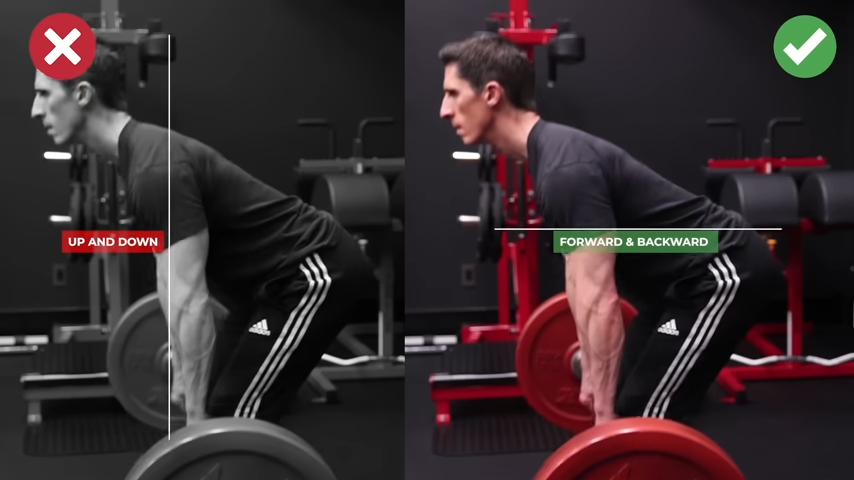
That’s only achieved through a proper hinge.
For those that have a hard time understanding what this is, take your hands and put them along the inguinal crease.

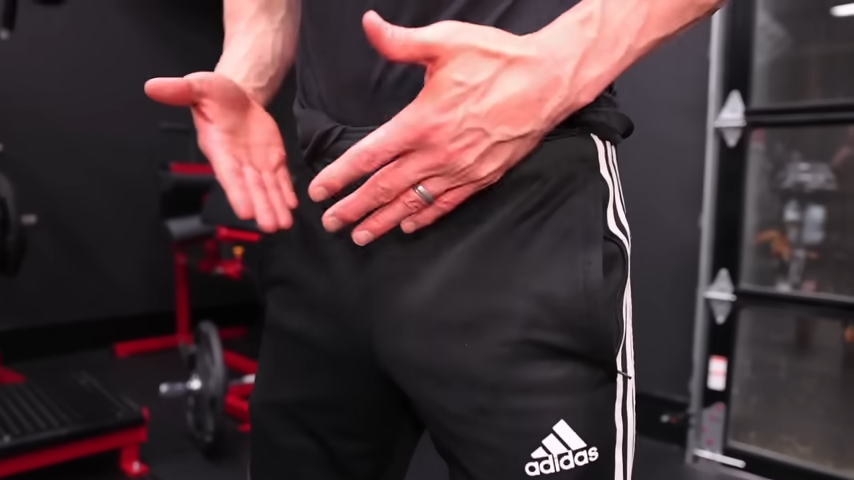
Now, I want you to try to hide your pinkies.
In other words, bend backwards until the pinkies get folded in between your lower abdominal muscles and your upper thigh.
And if you feel that contact from both sides, you know you’re hinging properly at the hips.
The other way you can do this, if you don’t know how to feel it, is to get in front of a drawer and try to close it with your butt.

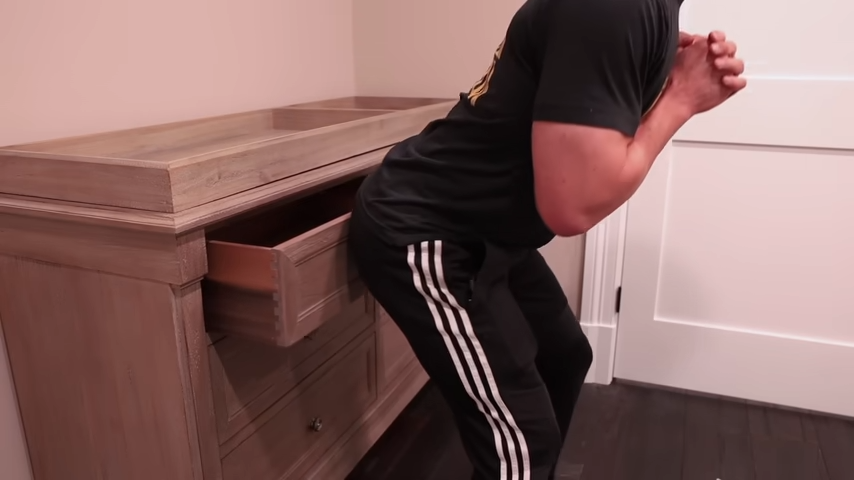
Now, as you do the hip hinge, there are two things you want to focus on: the position of your pelvis and the bar path.
Let’s start with your pelvis…
POSITION OF THE PELVIS

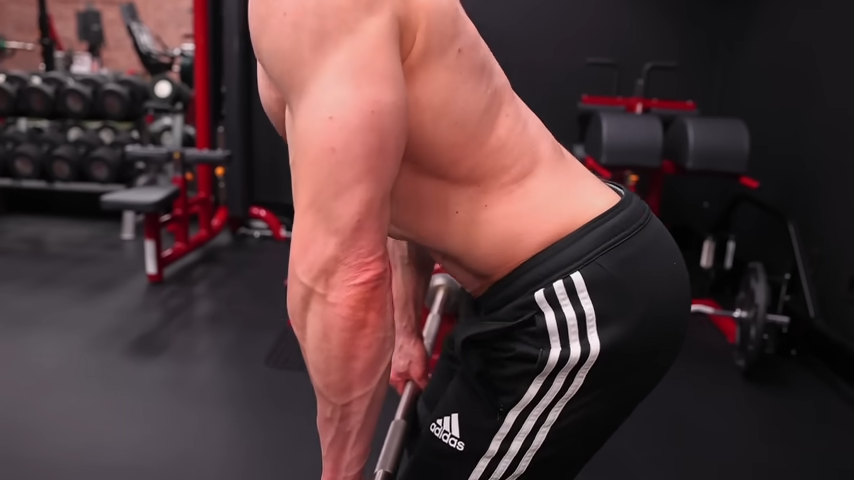
Regarding your pelvis, you want to fight for anterior tilt as you lower the bar down.
Think of it like you’re tilting. A better way to think about it is as if your pelvis is a pitcher of water.
You want to pour it out in front of you.
As you lower down, fighting for that position is going to prevent that flexion of the lumbar spine.
It will also maximize the stretch on the hamstrings in this excellent exercise.
Remember this is a stretch tension and hypertrophy-based exercise for the glutes and hamstrings. In fact, it can be one of the most effective hamstring exercises if done correctly.
If you allow it to start drifting here into posterior tilt, you’re going to take away a predominant amount of that stretch that’s being applied to the major target muscles.
Next up, let’s discuss the bar path.
BAR PATH

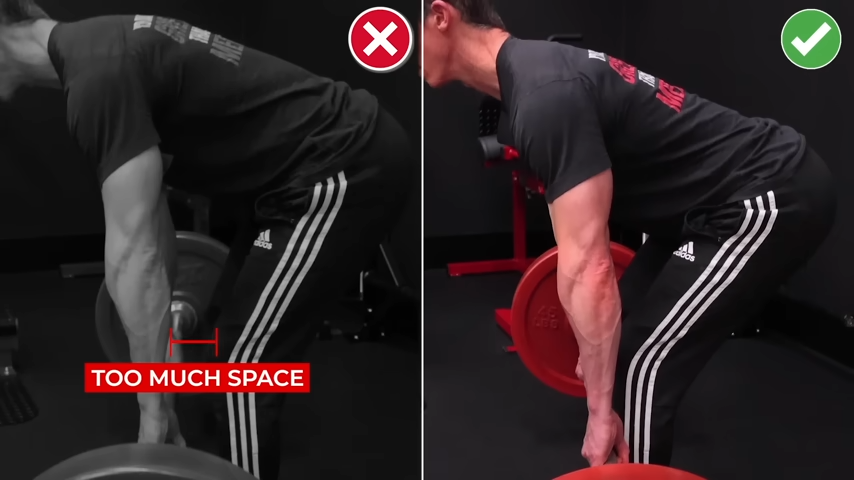
Now, as far as the bar path, you want it to be moving straight up and straight down.
And the only way for this to happen is for you to let the bar ride your thighs on the way down of the eccentric portion and have it ride your thighs on the way back up too.
You see, allowing it to drift out in front of you causes a completely different bar path that doesn’t just straighten the line, but it’s likely going to unstraighten your posture when your low back blows out from doing it incorrectly.
DEPTH OF BAR

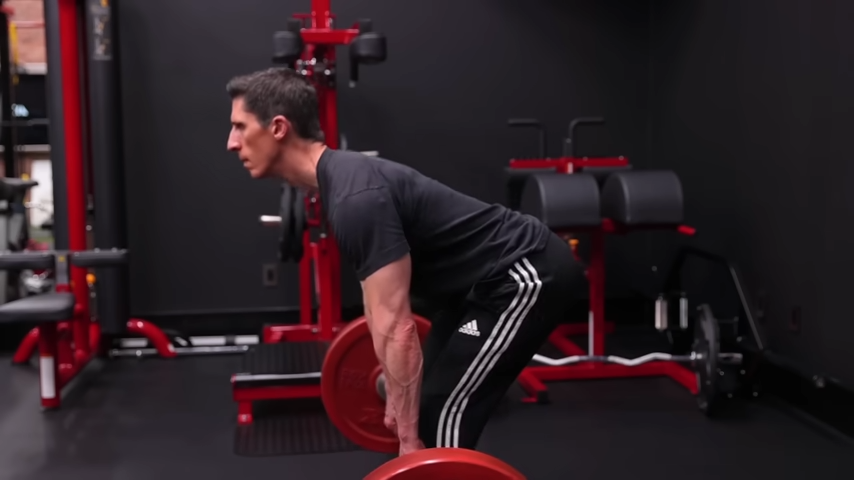
Now, how far down do you go?
Well, that’s determined by your degree of hamstring flexibility and your ability to maintain that slight anterior pelvic tilt at the bottom.
Because even if you do this correctly and you go a little bit lower than you’re able to, you’ll allow your spine to bend underneath.
Well, that’s one of the most common faulty movement patterns.
If you do this, you’re compromising the safety of the RDL exercise and losing the stretch in the process.
So go as far back as your butt will go but stop once it can’t go anymore without compromising that pelvic position.
RETURN TO THE TOP

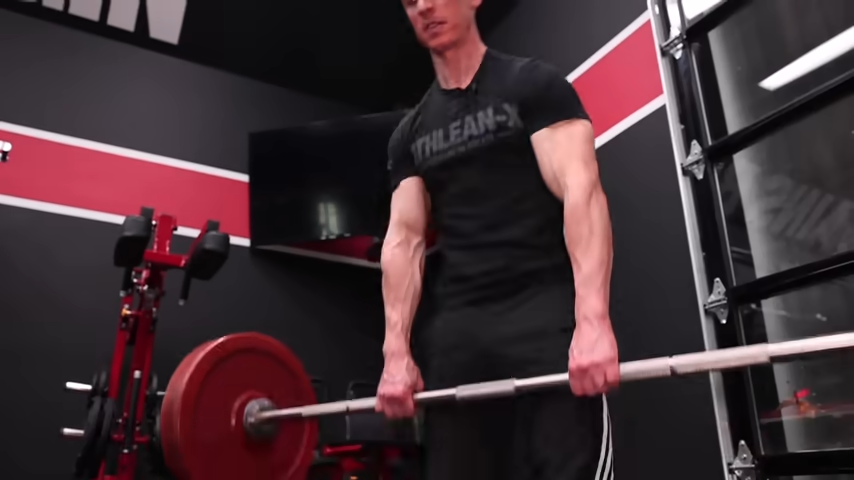
You’re almost there. Now, you need to get back to the top.
Remember, you’re not lifting this bar up, and you’re not pulling with your arm.
You’re pushing the bar back up to the top with your hips.
When you do this, your glutes and hamstrings will be the driver of the lower body movement rather than your low back.
HOW TO DO THE ROMANIAN DEADLIFT
By this point, you should feel comfortable with performing the Romanian Deadlift, but I want to summarize everything we just went over.
Here’s how to do the Romanian Deadlift correctly:
ROMANIAN DEADLIFT

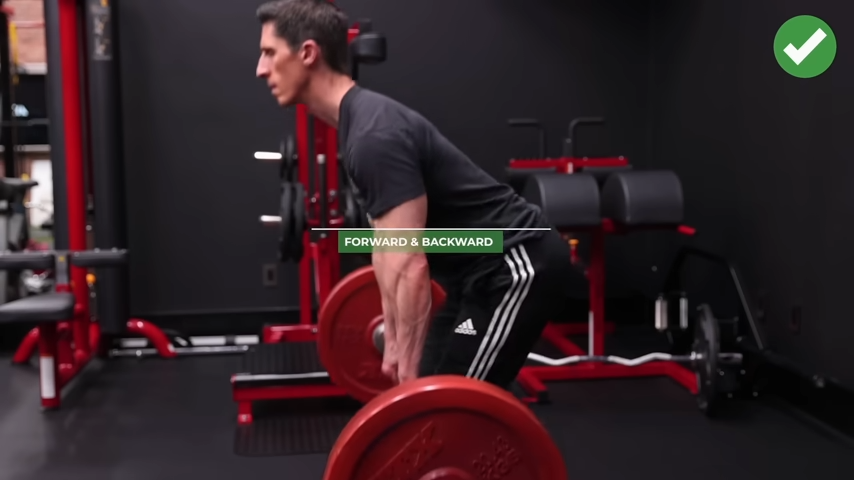
HOW TO DO THE ROMANIAN DEADLIFT:
- Begin by gripping the barbell just outside shoulder width. This optimal overhand grip width prevents lat engagement issues and avoids interference with your body’s mechanics.
- Stand with your feet hip-width apart, firmly gripping the ground with your toes to ensure stability and balance throughout the movement.
- Set your spine by lifting your chest and elevating your collarbones, which corrects the thoracic spine without over-flexing. Simultaneously, engage your glutes to stabilize and neutralize your spine from the bottom.
- Initiate the movement by hinging at the hips, not by bending the knees deeply. Imagine closing a drawer with your buttocks or hiding your pinkies in the inguinal crease to ensure a proper hinge, keeping the bar close to your body.
- Maintain a slight anterior tilt in your pelvis as you lower the bar, ensuring it moves straight up and down along your thighs. This technique protects your lower back and maximizes hamstring engagement.
- Lower the bar only as far as your hamstring flexibility allows without compromising your pelvic tilt or spinal alignment. The moment your lower back begins to round, you’ve reached your maximum depth.
- Drive through your hips and glutes to return to the standing position, focusing on pushing the ground away rather than pulling up with your back during the entire exercise.
WHAT MAKES IT EFFECTIVE: The Romanian Deadlift is effective because it simultaneously strengthens and stretches the posterior chain muscles, promoting balance, stability, and power through a controlled, hip-hinging movement that engages the glutes, hamstrings, and lower back.
HOW TO DO A ROMANIAN DEADLIFT WITH DUMBBELLS?
Right now, some of you are saying, “Hey Jeff, I don’t have access to a barbell – What am I supposed to do?”
Don’t worry – I’ve got you covered.
If you are able to get your hands on a pair of dumbbells, you’re able to do the Romanian Deadlift.
But there is one major point on proper RDL form that I want to go over when it comes to using a dumbbell variation vs. a barbell.

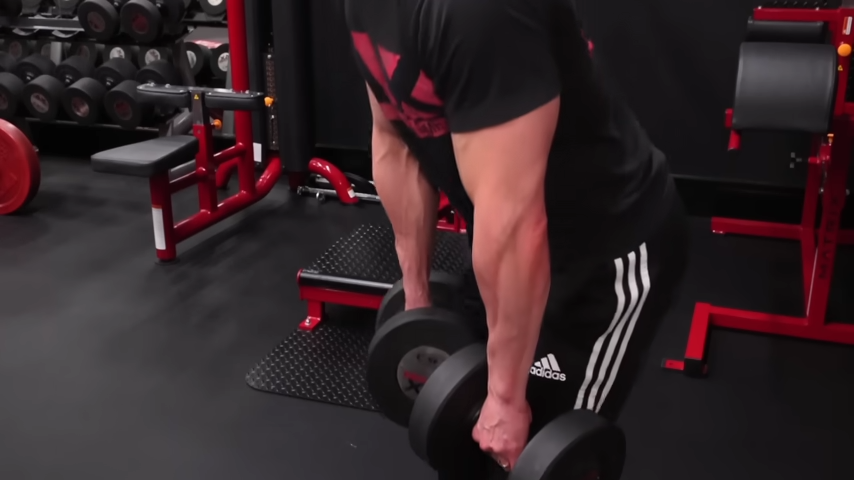
You’ve got to make sure that you place the dumbbells in the right place.
If you hold them out in front of your body, the tendency will be to allow yourself to drift a little bit too far.
Again, putting that strain on the lower back.
If you hold them directly at your sides, you’re going to find that it’s awkward to maintain their position as you go up and down.
The best position is to angle them at about 45 degrees and simply place your hands in contact with your thighs.
You’ll find it gives you the most normal motion up and down and simulates the bar most accurately.
COMMON MISTAKES IN THE ROMANIAN DEADLIFT
The Romanian Deadlift variation is a staple in strength training, revered for its effectiveness in building lean muscle tissue, especially in the hamstrings.
However, mastering the deadlift properly requires attention to detail—missteps can hinder progress and increase injury risk.
Let’s explore common technique errors and how to correct them for a deadlift worthy of your goals.
INCORRECT KNEE POSITION
A frequent form error is excessive knee bending, akin to a Traditional Deadlift vs Deadlift variation like the Sumo Deadlift or the Barbell Stiff-Legged Deadlift.
The Romanian Deadlift should maintain a slight knee bend throughout the entire time to target the hamstring exercise effectively.
Avoid turning the movement into a squat by ensuring your knee position remains consistent, just a couple of feet apart, to alleviate knee strain and maximize hamstring and adductor muscles activation.
MISALIGNED FEET AND HANDS
Your feet should be about shoulder-width apart, and hands at shoulder distance on the bar, ensuring the bar is at hip level to start.
This alignment helps maintain balance and focuses the tension on the desired muscle groups.
Misalignment and improper form can lead to ineffective lifting technique, reducing the activity in deadlift exercise and potentially causing hamstring injuries.
NEGLECTING SHOULDER BLADES RETRACTION
For proper form and injury prevention, your shoulder blades should be retracted and held tight throughout the movement.
This not only protects your back but also ensures the barbell at knee height moves in close proximity to your legs, reducing the risk of torso parallel deviation and enhancing body strength development.
OVERLOADING TOO SOON
Beginners often make the mistake of lifting heavy weights without mastering the basic technique.
Starting with a lighter load allows for a focus on form guide essentials, like keeping the torso rigid and avoiding jerky movements.
Gradually increasing weight plates as you progress ensures additional strength benefits without compromising safety.
IGNORING REP RANGES AND ECCENTRIC TRAINING
Effective RDL practice involves varying rep ranges and incorporating eccentric training—lowering the weight slowly and controlled.
This application to resistance training not only improves handgrip strength but also encourages muscle growth and secondary muscles engagement, vital for achieving the goal of building muscle.
OVERLOOKING THE IMPORTANCE OF SECONDARY MUSCLES
The Romanian Deadlift is a compound movement that requires the activation of several muscle groups, including the core and glutes, to support the primary hamstring work.
Neglecting the engagement of these secondary muscles, like the adductor muscles, can lead to an imbalance and diminish this popular exercise’s effects on muscles.
Understanding these common mistakes and implementing the corrections can significantly improve your journey with deadlifts.
Whether you’re a certified strength coach or an enthusiast aiming for additional strength benefits, ensuring a focus on knee position, proper alignment of feet and hands, maintaining shoulder blade retraction, starting with an appropriate load, and engaging secondary muscles will lead to a more effective and safe Romanian deadlift experience.
Guys, if there’s one thing I want you to walk away with, it’s this:
The Romanian Deadlift is not an up-and-down movement. It’s a back-and-forth exercise.
If you want to engage the hamstrings and the glutes effectively, be sure to lead with pushing your butt back. Practice on a dresser drawer until you get the movement down.
Then add in the Romanian Deadlift to your workout routine.
If you’re looking for a strength training program to get you strong and ripped from head to toe, be sure to try our Program Selector and grab the ATHLEAN-X workout program that best matches your current training goals. We’ve got a training routine for everyone… from beginners to experienced lifters.

- The Romanian Deadlift is one of the most effective exercises for the posterior chain but it’s often performed incorrectly. Here’s a breakdown of how to do a Romanian Deadlift:
- Start by holding the barbell slightly wider than shoulder-width to maintain proper lat engagement and ensure your body’s mechanics are not hindered.
- Position your feet hip-width apart and actively press down with your toes, securing your balance and stability for the duration of the exercise.
- Correct your spinal alignment by lifting your chest and raising your collarbones, which naturally adjusts the thoracic spine. At the same time, activate your glutes to provide stability and maintain a neutral spine from the base.
- Begin the exercise by pushing your hips back, rather than bending your knees significantly. Visualize shutting a drawer with your rear or tucking your pinkies into the crease at your hips to achieve the correct hinge motion, keeping the barbell close to your body.
- As you lower the barbell, keep your pelvis slightly tilted forward to ensure the bar travels vertically along your thighs, safeguarding your lower back and enhancing hamstring muscle mass.
- Descend only to the point where your hamstring flexibility permits, without altering the tilt of your pelvis or the alignment of your spine. If your lower back starts to curve, that indicates you’ve gone as low as you should.
- To return to the starting position, power the movement with your hips and glutes, pressing down into the floor, which shifts the focus from pulling with your back to pushing with your lower body muscles.
ROMANIAN DEADLIFT FAQS
The Romanian Deadlift elevates your exercise regime, targeting the posterior chain with unparalleled efficiency.
This ideal exercise isn't merely about hoisting weights; it's about honing a technique that profoundly engages your hamstrings, compelling them to both extend and strengthen in unique ways.
But the benefits extend far beyond the hamstrings.
The RDL is a powerhouse for glute development, shaping strength and definition precisely where it's most desired.
It also acts as a formidable core workout. Achieving flawless form in this exercise translates into a stronger core, essential for peak athletic performance.
It's about more than just brute strength; it's about enhancing balance and posture.
By reinforcing the posterior chain, you're poised to stand taller and with greater confidence, effectively countering the modern-day scourge of sedentary habits.
Most importantly, the RDL's functional aspect mirrors everyday functional movements, promoting agility and keeping you safeguarded against injuries, whether in competitive environments or daily routines.
The Barbell Deadlift and the Romanian Deadlift (RDL) are both fundamental movement patterns in strength training, targeting the muscles of the posterior chain.
However, they differ significantly in terms of technique, ranges of motion, and the primary muscles targeted.
Starting Position: The Traditional Deadlift begins with the weight on the floor, requiring you to lift it from a dead stop (hence the name "deadlift"). In contrast, the RDL starts with the weight at hip level, usually lifted off a rack, and focuses on the lowering phase before the weight is returned to the starting position.
Range of Motion: In a Conventional Deadlift, the full range of motion involves lifting the weight from the ground until you're standing fully upright, using a combination of leg, hip, and back strength. The RDL, however, emphasizes the lowering of the weight by hinging at the hips with slightly bent knees, then returning to the starting position, primarily targeting the hamstrings and glutes without the weight touching the ground between reps.
Muscle Focus: While both exercises work the posterior chain and leg muscles, the Regular Deadlift engages a broader spectrum of muscles, including the quads, hamstrings, glutes, lower and upper back, and forearms for improved grip strength. The RDL places a greater emphasis on the hamstrings and glutes, with a significant stretch and contraction in these muscles due to the hip hinge mechanics.
Hip and Knee Movement: The Standard Deadlift involves a more significant bend at the knees and requires more quad engagement to initiate the lift from the floor. The RDL is characterized by a lesser bend in the knees and a greater hip hinge, keeping the spine neutral and the focus on the hamstrings and glutes.
Spinal Position: Both exercises demand a strong, neutral spine, but the RDL requires maintaining this position while hinging deeply at the hips, which can be more challenging in terms of flexibility and back strength.
The Barbell Squat and the Romanian Deadlift (RDL) are both pivotal exercises in strength and conditioning programs, yet the biggest differences are in their execution, primary muscle engagement, and overall movement patterns:
Movement Mechanics: The Squat is primarily a knee-dominant exercise, where the focus is on bending and extending the knees while keeping the torso as upright as possible. This contrasts with the RDL, which is a hip-dominant movement that emphasizes hinging at the hips with minimal knee bend, promoting a horizontal movement of the hips backward while maintaining a neutral spine.
Muscle Focus: Squats are renowned for targeting the quadriceps (front of the thighs) alongside engaging the glutes, hamstrings, and lower back. On the other hand, the RDL specifically targets the posterior chain, including the hamstrings, glutes, and lower back, with less emphasis on the quadriceps.
Range of Motion: In a squatted position, the range of motion involves lowering the body by bending the knees until the thighs are at least parallel to the floor (or deeper, depending on flexibility and form), then rising back up. The RDL involves keeping the legs relatively straight (with a slight bend in the knees) while lowering the weight close to the front of the legs, hinging at the hips until a stretch is felt in the hamstrings, then returning to the starting position.
Spinal Position: Squats require a more upright spinal position to accommodate the vertical descent and ascent of the body. In contrast, the RDL demands maintaining a neutral spine while the torso hinges forward, which can challenge one's flexibility and control over the lower back muscles.
Equipment and Variations: Both exercises can be performed with a variety of equipment, including barbells, dumbbells, and kettlebells. Squats often incorporate variations such as Front Squats, Back Squats, and Overhead Squats, affecting the muscle groups involved and the movement's complexity. RDL variations might adjust grip width or stance to slightly alter the emphasis on the posterior chain muscles.
Romanian Deadlifts are highly effective for muscle growth, especially targeting the posterior chain muscles like the hamstrings, glutes, and lower back.
This effectiveness comes from several factors, including targeted muscle engagement through controlled hip hinge movements, which under heavy loads, stimulate muscle fibers for growth.
The emphasis on the eccentric, or lowering phase, introduces eccentric loading that causes muscle damage, a catalyst for muscle repair and growth.
As a functional compound exercise, the RDL works multiple joints and muscle groups simultaneously, allowing for heavier loads and more muscle stimulation.
Its versatility means weight, volume, and intensity can be adjusted to continuously challenge muscles, fostering sustained growth.
Strengthening the posterior chain not only enhances athletic performance and everyday function but also improves stability and posture.
Incorporating RDLs into a comprehensive training program, alongside proper nutrition and recovery, is key to maximizing muscle size and strength in the lower body.
During a Romanian Deadlift, a slight knee bend is essential and should be maintained throughout the exercise to facilitate proper form and effectiveness.
This minimal bend is crucial for enabling the hip hinge movement, where the hips move backward and the torso leans forward, all while keeping the spine neutral.
Such a bend not only ensures optimal engagement of the hamstrings, a primary focus of the RDL, but also safeguards the spine by preventing it from rounding, thus reducing injury risk.
Additionally, it contributes to the smooth execution of the movement, promoting controlled lowering of the weight and focusing on the posterior chain muscles.
Importantly, this slight bend prevents knee joint hyperextension, protecting the knees during the exercise.
The effectiveness of Romanian Deadlifts largely hinges on one's specific fitness objectives, especially when focusing on strength, muscle growth, and enhancing the posterior chain.
RDLs excel in targeting the hamstrings and glutes through their distinct hip-hinge movement, making them ideal for individuals aiming to fortify and develop these areas more precisely than what other deadlift variants offer.
Additionally, RDLs are beneficial for those looking to reduce lower back strain, as their controlled movement and focus on maintaining a neutral spine help manage back load effectively.
RDLs stand out for promoting hamstring flexibility and hip mobility, thanks to the emphasis on muscle stretch and contraction.
The exercise's focus on the eccentric phase is particularly conducive to muscle growth and strength due to the increased muscle microtears during this phase, which facilitate muscle development upon repair.
RDLs also integrate various components of the posterior chain in a cohesive movement, contributing to better posture, enhanced performance in other lifts, and decreased injury risk.
RDLs demand and improve body awareness, balance, and control, highlighting technique and making them suitable for those keen on refining their lifting skills.
REFERENCES

Jeff Cavaliere M.S.P.T, CSCS
Jeff Cavaliere is a Physical Therapist, Strength Coach and creator of the ATHLEAN-X Training Programs and ATHLEAN-Rx Supplements. He has a Masters in Physical Therapy (MSPT) and has worked as Head Physical Therapist for the New York Mets, as well as training many elite professional athletes in Major League Baseball, NFL, MMA and professional wrestling. His programs produce “next level” achievements in muscle size, strength and performance for professional athletes and anyone looking to build a muscular athletic physique.
















